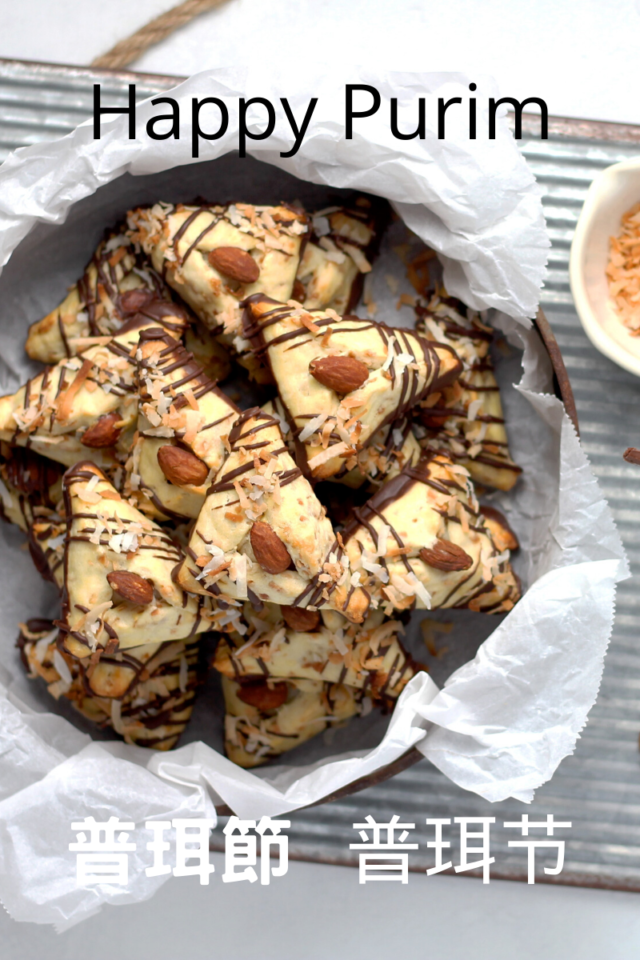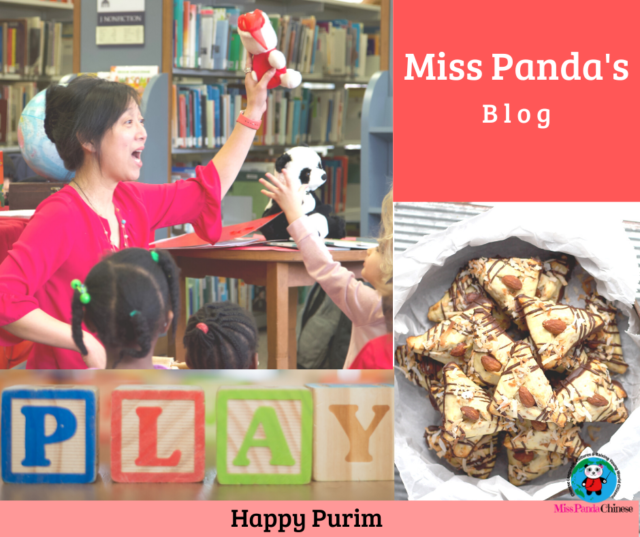Happy Purim in Chinese World Culture for Kids

Purim is a Jewish holiday. It is on the 14th day of the month of Adar on the Hebrew Calendar. It begins at sunset on the first day and ends at sunset the next day. Purim honors the Jewish heroine Esther who saved her people.
The word „purim” is derived from Akkadian word „pur” – lots, as in lottery, a winning lot.
-Jewish Historical Institute
Story – Queen Esther
People read Megillat Esther, the Book of Esther during Purim. How did Queen Esther let king Ajasierus know about the hurtful plan malicious Haman had to harm her people in Persia? You and your child can read the story here. And you can listen to the reading in this video.
Purim Graggers
Gragger is a noisemaker. The tradition is that children and adults will use gragger to make noise each time when the villain, Haman’s name is mention during the reading of Megillat Esther.
Symbolic Food
People eat a triangular cookie, hamantaschen during Purim. The name hamantaschen refers to the villain, Haman. And, the cookie is representing Haman’s ears. What is filling in the cookie? They are usually filled with jam. I’ve also heard many kids enjoy the chocolate filled ones.
Friendship and Food Gifts
Another Purim tradition is Mishloach Manot which means “sending portions to one another.” The practice is to give food gifts to family, friends, and others on the day of Purim. It is common to see two ready-to-eat food items in a gift package.
Giving to the People in need
Matanot L’evyonim is “gifts to the poor” in Hebrew. This can be done by donating food or clothing to a shelter or food bank. Another way is to simply give coins to tzedakah. Giving gifts to the poor is to honor Esther.
Chinese Expressions You Can Use for Purium
-
read megillah – dú yǐ sī tiē 讀 以斯帖 | 读以斯帖
-
use graggers – yáo jílún 搖 棘輪 | 摇棘轮
-
eat hamantaschen – chī sānjiǎoxíng de bǐnggān 吃 三角形的餅乾 | 吃三角饼干. Hamantaschen cookies are also known as “Haman’s ears “hā màn ěrduǒ” 哈曼耳朵 .
-
Mishloach Manot (giving gifts of food) – sòng chī de lǐwù gěi péngyǒu | 送 吃的禮物給朋友 | 送吃的礼物给朋友
-
Matanot L’evyonim (helping the poor) – bāngzhù qióngrén 幫助 窮人 | 帮助穷人
-
Celebrate Purim – qìngzhù pǔ ěr jié 慶祝 普珥節 | 庆祝普珥节. You may also hear people call Purim
pǔ lín jié 普林節 |普林节。
Do you know any cultural celebration that has some similarities to Purim? What is it? What is the story behind the festivity?
Image by sheri silver

Happy Purim in Chinese World Culture for Kids